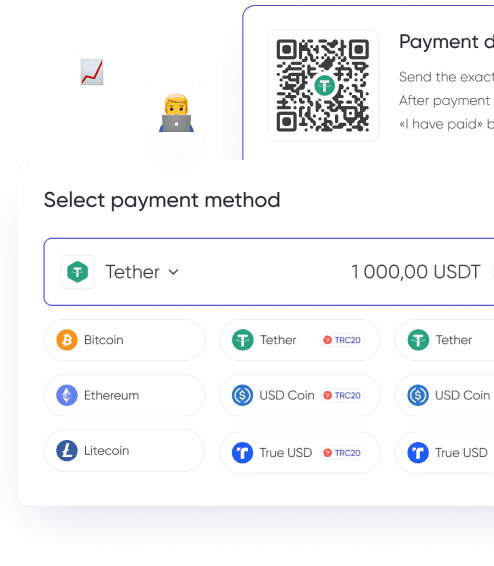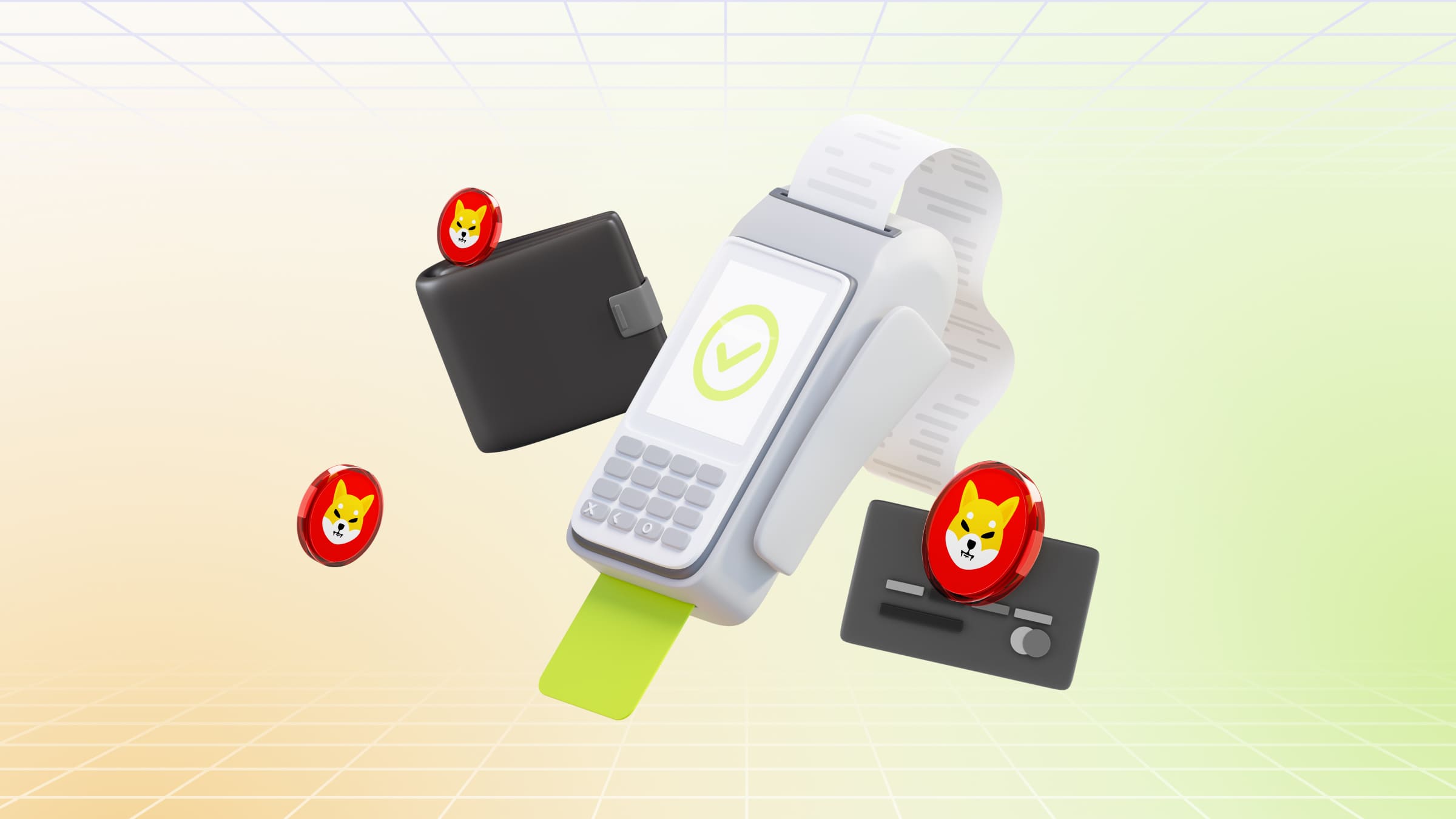USDT, or Tether, is the most popular stablecoin and the third most popular cryptocurrency in the world. In terms of market capitalization, this coin is second only to Bitcoin and Ethereum; the current value of all circulating «digital dollars» is more than $120 billion.
Due to the popularity of this stablecoin, USDT users have access to many different wallets: this coin is supported by most major platforms. We offer a selection of the best cryptocurrency wallets and tell you how to make the right choice.
Tether: Brief Information
Before considering the question of which one to choose to store USDT, let's tell you a little about this stablecoin.
It was released by Tether in 2014 on the Bitcoin blockchain and began being traded through the Bitfinex exchange. The coin was created as a digital analog of the dollar: its exchange rate is pegged to the USD at a 1:1 ratio. The stability of the rate is ensured by the assets owned by Tether; each coin is backed by the US dollar. Thanks to this, fluctuations in value are minimal.
Although the low volatility makes Tether a less profitable investment than more traditional cryptocurrencies, this stablecoin retains its popularity even ten years after its launch.
This is due to its convenience: USDT is used as a popular currency pair for BTC, and is also actively used as a means of payment. The current market capitalization of the coin is more than $120 billion. This is more than $30 billion more than the nearest competitor (BNB).
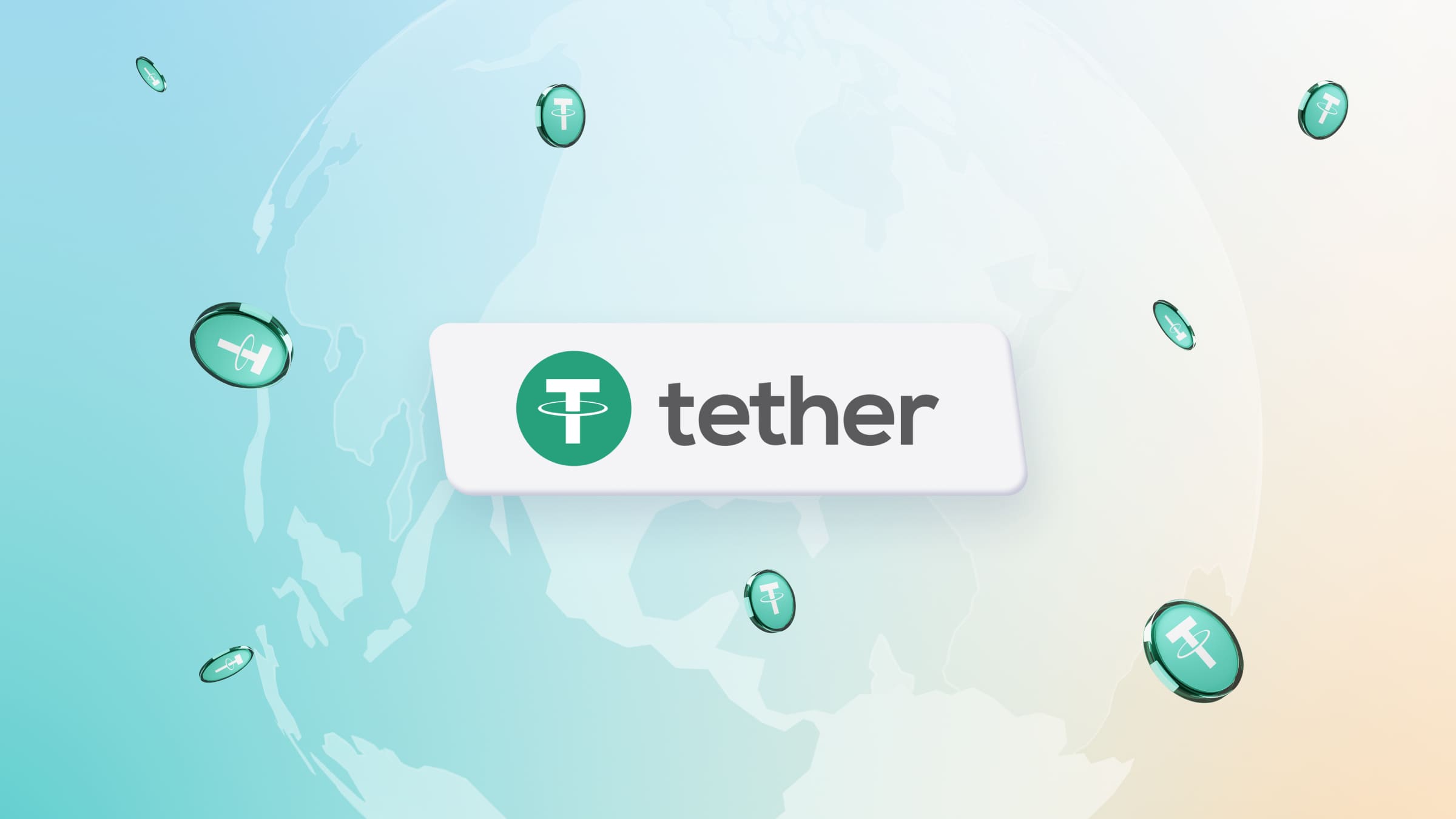
How to Choose a Cryptocurrency Wallet?
We recommend focusing on several criteria:
- Security. A reliable cryptocurrency wallet should provide high-quality protection: support two factor authentication along with a code or password, use data encryption, etc.
- To avoid losing access to funds, you should make sure that the wallet supports the use of multiple means of asset protection, such as seed-phrase and backup.
- Compatibility. To work properly with USDT, the wallet should be compatible with the blockchains the crypto owner plans to use such as Omni, TRON, Algorand, etc. In addition, it is recommended to take into account the list of other available currencies and compatibility with third-party platforms.
- Convenience. It is important that the Tether wallet was convenient to use. Thus, the interface should be adaptable to different devices, and access to functions should be intuitive. This will make it easier to start working with the system.
- Support. We recommend checking the speed of technical support responses in advance and making sure that in case of problems, the user has the opportunity to contact a real specialist. This is especially relevant for hot cryptocurrency wallets that have constant access to the network.
- Additional features. When evaluating this factor, you should focus on the requests of a particular user: support for additional currencies, the ability to work with DeFi applications, the conversion function and buying/selling of cryptocurrency, etc.
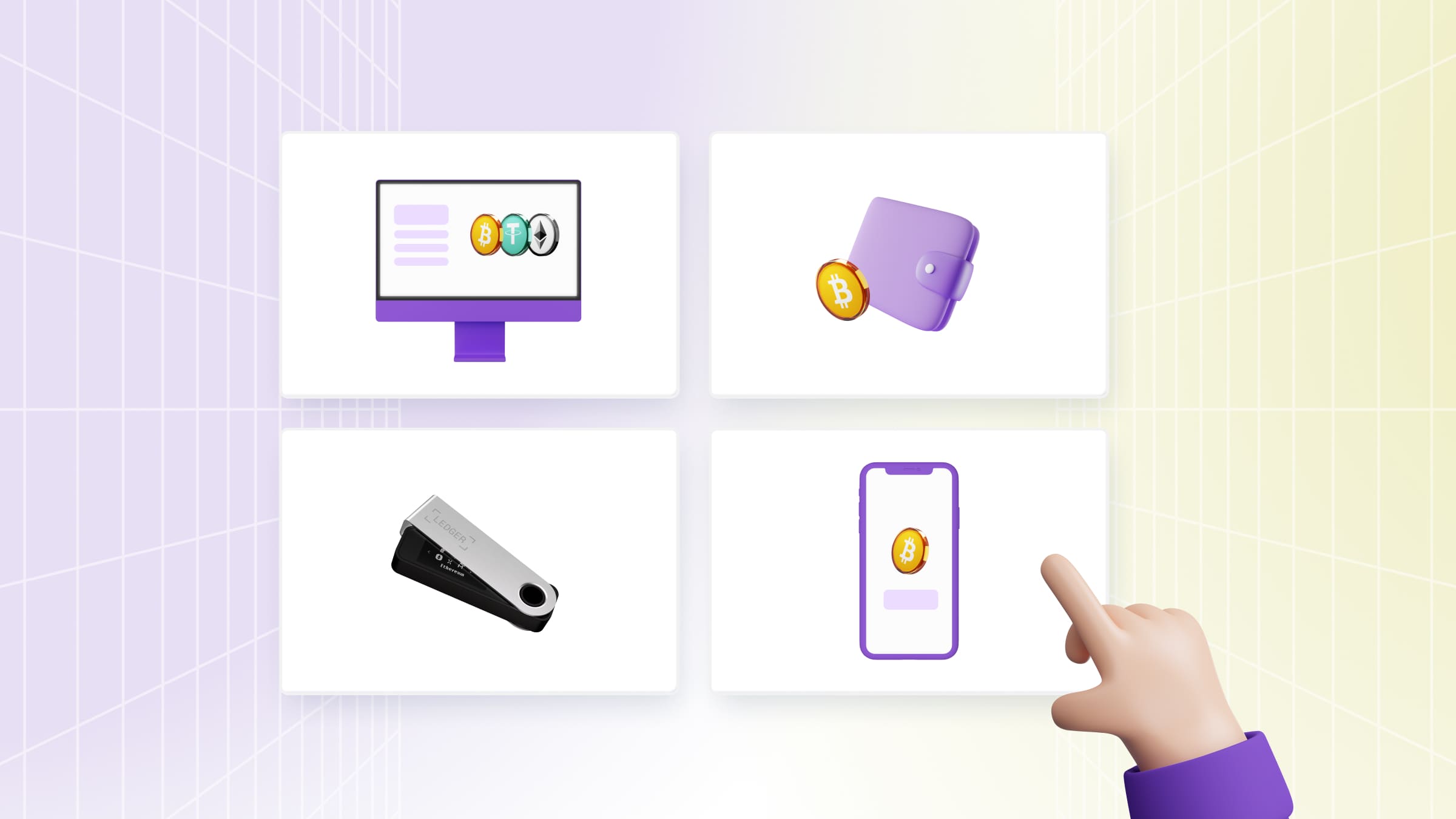
How to Create a Cryptocurrency Wallet?
To create a USDT wallet, you will need to:
- Choose a service. More specifically, it is important to decide on the type: a cold cryptocurrency wallet is suitable for safe storage, while a hot one is for active use of the assets.
- Install the application or register on the website of the chosen platform. As a rule, platforms offer clear step-by-step instructions for downloading, installing and registering.
- Come up with a password or access code. It is important that it be complex and does not coincide with those set by the user on other platforms. This will reduce the risk of hacking.
- Pass verification. Completing this procedure is a requirement of most trusted cryptocurrency wallets. Such a measure is necessary for safe and legal work with finances.
- Customize security. It is recommended to activate two factor authentication, if the service offers this option. 2FA will help protect assets from intruders.
- Save a seed phrase. This phrase is necessary to restore the wallet in case of access loss. The system generates it when creating an account — the user only needs to save it in a safe storage.
Sometimes users may lose access to their cryptocurrency wallet. In such cases, it can be restored using several methods, which we have described in the article.
Best Wallets for Tether
Bybit
Bybit is a crypto exchange that offers users a built-in Web3 wallet. The service can be used for working with decentralized tokens, trading on DEX exchange, staking, participating in IDO. There is support for EVM networks and the SUI blockchain.
Several wallet varieties are available to users: cloud (custodial, linked to an account on the exchange), with a mnemonic phrase (non-custodial) and keyless. To create a wallet, you will need to download an application or install a Chrome browser extension, and then set an access password following the system's prompts.

HTX
HTX crypto exchange is a platform for trading and earning cryptocurrency. The website offers a range of tools: futures, staking, investments, trading bots and much more.
To create an account on the exchange, you only need to click «Register» on the official website and set a password. In addition, you can manage your account through the official application. To activate the account, you will need to enter the code sent to the specified e-mail/phone number. To perform transactions with USDT, you need to select this token in the «Assets» section and specify the required network.
Bitget
Web3 wallet from cryptocurrency exchange Bitget is a tool for working with DApps and NFTs. The service supports 100+ networks and 250,000+ currencies. Users have access to instant crosschain exchanges, flexible trading, staking, and charts showing the current state of the market. The service maintains an asset protection fund for users ($300 million). There are integrations with hardware wallets.
The wallet can be downloaded as an iOS or Android app, or installed as a browser extension. After that, you will need to click «Create Wallet» and follow the system's prompts, and then add USDT with the «+» button on the main page.
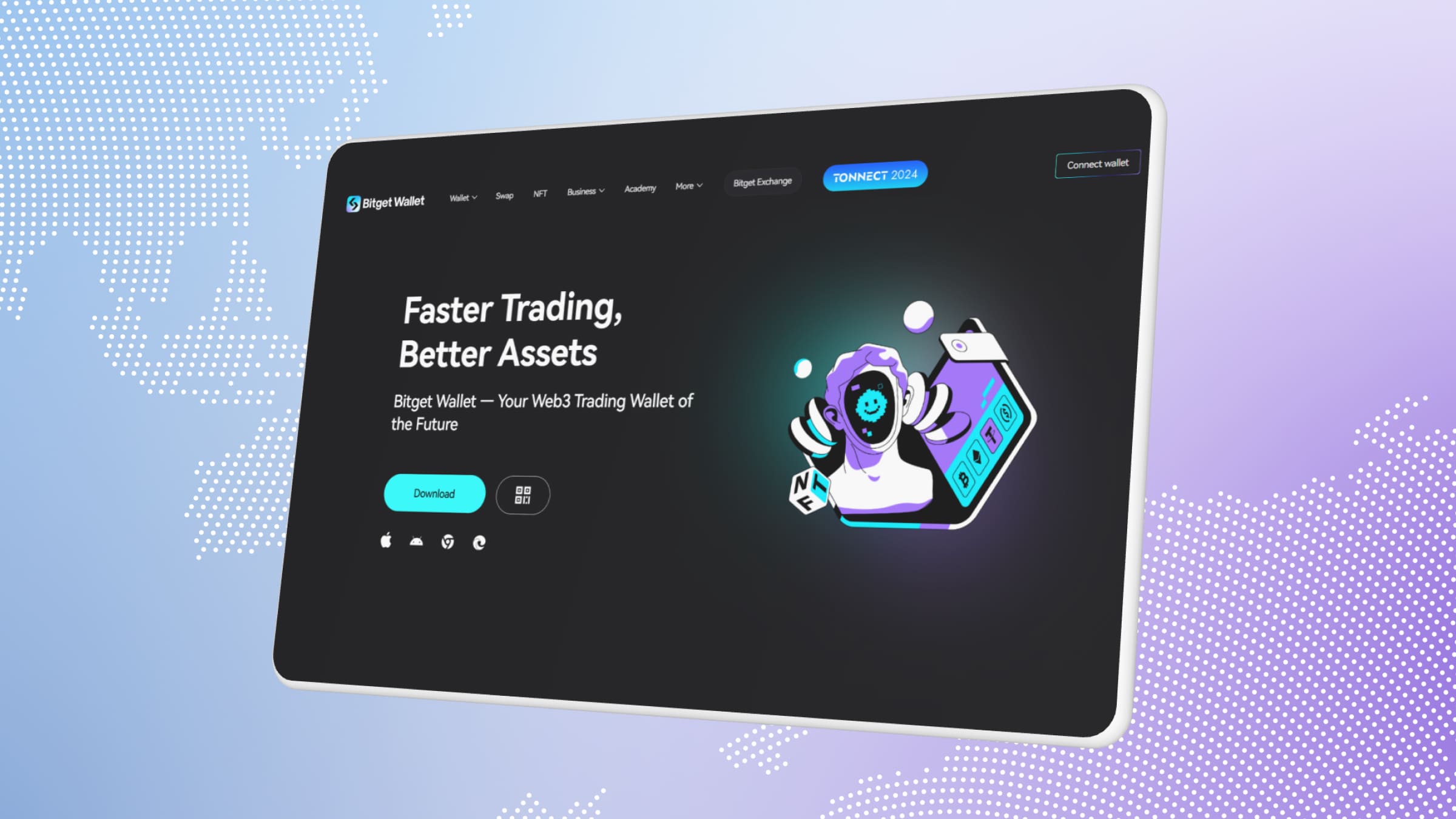
Trust Wallet
Trust Wallet is a mobile non-custodial wallet from the cryptocurrency exchange Binance. In addition, the service can be used as a browser extension.
The wallet supports more than 100 blockchains and more than 10 million coins. Integration with Binance and Coinbase exchanges allows you to directly fund your account from an account on these platforms.
There is support for decentralized applications, staking, withdrawal of funds to a bank card and currency exchange through the Smart Swap system, which allows you to find the most favorable rate.
To work with USDT, the wallet will need to be set up by adding a stablecoin to the main page of the system.
We devoted an article to the overview of the Trust Wallet.
MetaMask
MetaMask wallet is a browser extension that allows you to work with cryptocurrency completely anonymously: account creation does not require verification. In addition, the wallet can be managed via a mobile application. Among the available functions are buying/selling currency, swaps, working with DeFi applications.
You can add Tether to this wallet manually. To do this, you will need to go to the «Tokens» tab, click «Add token» and find USDT through the search interface. After that, you will only have to fill out the form that appears, following the system's prompts, and confirm the action.
You can learn more about the functionality and features of the wallet in the article.
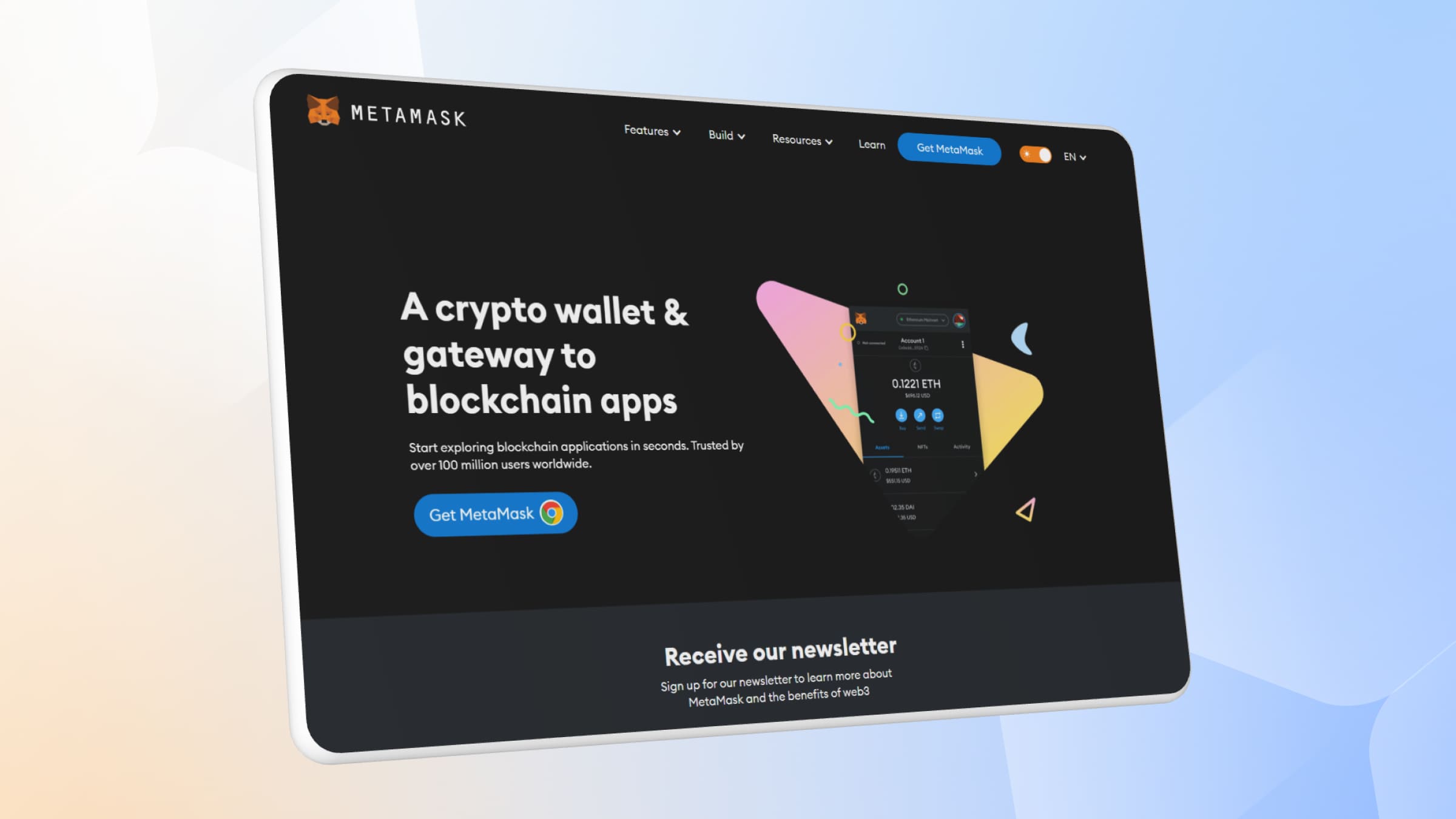
Exodus
Exodus is a multichain wallet with support for 50+ networks. There are both mobile and desktop versions. The service allows working with NFT and Web3 applications. Swaps and staking are available, as well as buying cryptocurrency for fiat.
The wallet is integrated with Trezor, which ensures maximum security: assets can be stored offline on Trezor devices. It also simplifies currency transfers between systems.
To get started, just download the required version of the application from the wallet's official website and click «Get Started». After that, you will need to add USDT to the cryptocurrency wallet by clicking «Add» in the portfolio section.
You can read detailed overview of the Exodus wallet in our article.
Trezor
Trezor is a hardware cryptocurrency wallet, i.e. an offline cryptocurrency storage device. It is available in several models ranging in price from $59 to $169. It is controlled via touchscreen or buttons.
The system supports 1000+ currencies and is managed through an official app that allows you to send, receive, and sell currency and it also supports staking. In addition, integrations with other crypto platforms are available.
You can set up the wallet yourself or with the help of an expert — the service offers the opportunity to book a video call, where the expert will help activate the device and answer all the questions.
To learn more about wallet, read our article «Trezor Hardware Wallets Models and Features Explained».

Coinomi
Coinomi is a non-custodial wallet that supports over 125 networks and thousands of currencies. It is one of the first multichain wallets, launched in 2014. The app is available in 25 languages and supports 168 fiat currencies, making it easy to use worldwide. There is a desktop and mobile version with the ability to perform synchronization to access the account from multiple devices.
After installing the app, the user can create a wallet by saving a system-generated seed phrase and setting a password. The tokens that will be displayed on the homepage are also selected at this stage.
Ledger
Ledger hardware wallets are among the top cryptocurrency wallets due to their security and convenience. The devices support 5500+ coins and allow you to buy, exchange, and steak currency.
Four wallet models are available to crypto owners ranging from compact flash drive-like devices to advanced wallets with a touchscreen for easy operation. The wallets connect to mobile/desktop devices via USB-C, Bluetooth or NFC and are controlled via an official app. Additionally, there are integrations with 20+ software wallets.
To create a wallet, you'll need to install Ledger Live and link your purchased device to it by following the system's prompts.
We have overviewed Ledger wallets in the article «Ledger Cold Crypto Wallet: Features, Models, and Benefits».
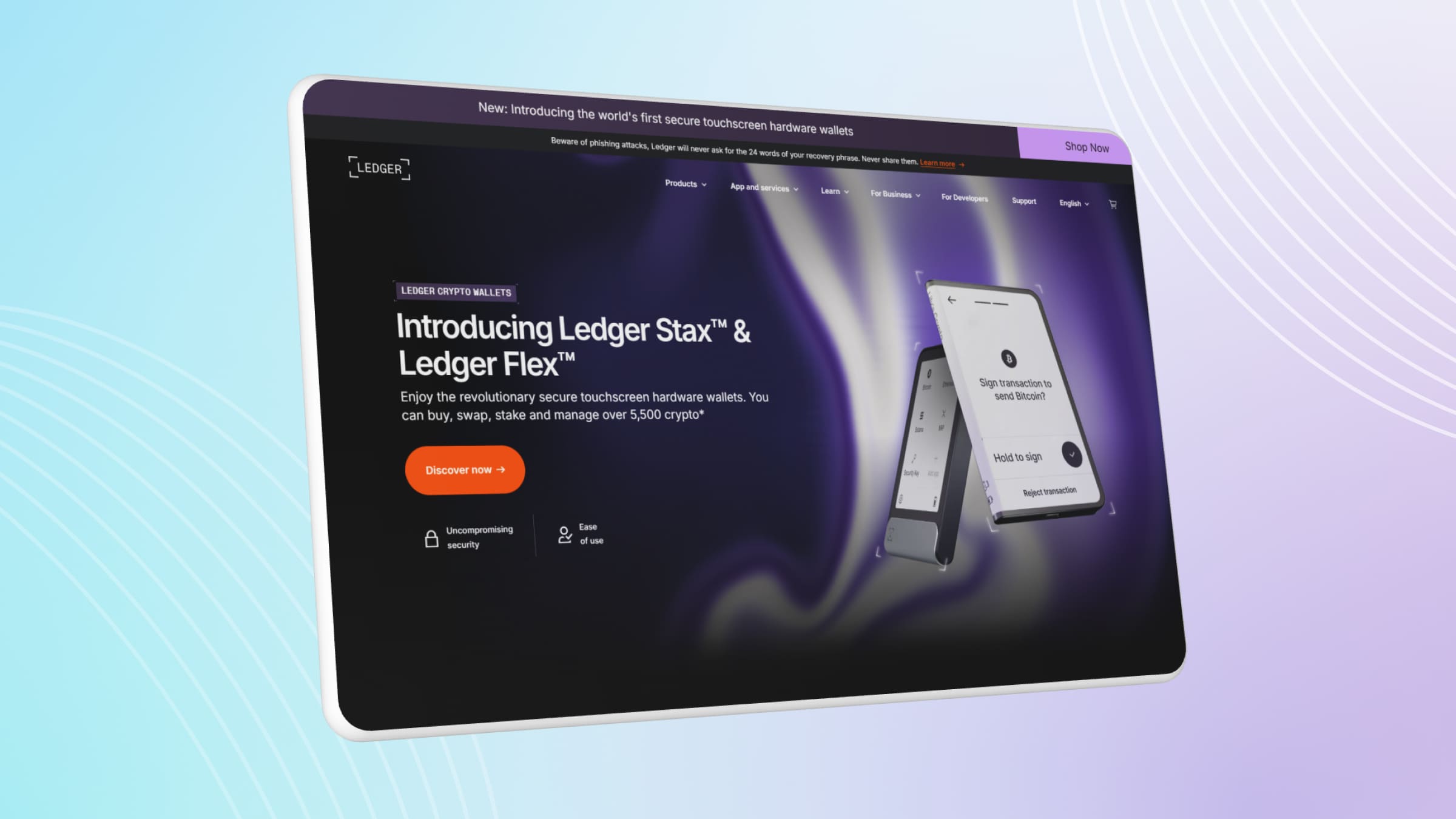
Tangem Wallet
Tangem Wallet is a hardware multicurrency wallet with support for 55+ networks. The device is similar to a bank card, providing convenience of storage through compactness and ease of use. Upon purchase, the customer receives two or three cards, where one is used as the main wallet and the second/third as a backup device to regain access if the first is lost.
The wallet does not use a pass phrase; instead, a private code is generated when the card is first activated. Activation requires downloading the official app and attaching the card to the device, after which the code-password is set. Biometrics can be used as additional protection.
You can read the review of Tangem Wallet in our article «Tangem Wallet: Cold Storage for Your Digital Assets».
SafePal
SafePal is another hardware wallet in our compilation. The system also includes a software wallet app, as well as a browser extension for ease of use.
The service supports 100+ blockchains and tens of thousands of tokens. There is crosschain, spot trading, staking, the ability to buy cryptocurrency for fiat, and NFT support. The cold wallet is protected from physical hacking by a self-destruct mechanism.
It is a relatively inexpensive wallet — devices cost from $49.99 to $89.99. Nevertheless, it should be taken into account that this platform is designed mainly for experienced crypto owners.
Read more about the wallet in the article.

Choosing a USDT Wallet
USDT is one of the most popular cryptocurrencies, and not surprisingly, there is a variety of wallets available on the market that support this coin. Choosing the right one can be quite challenging.
As a rule, users choose cold wallets for safe storage of funds and hot wallets for active use. When working with a particular exchange, it is recommended to consider services that support integration with the platform — this will simplify the work.
Many crypto owners combine the use of hardware and software wallets for maximum convenience and security.








